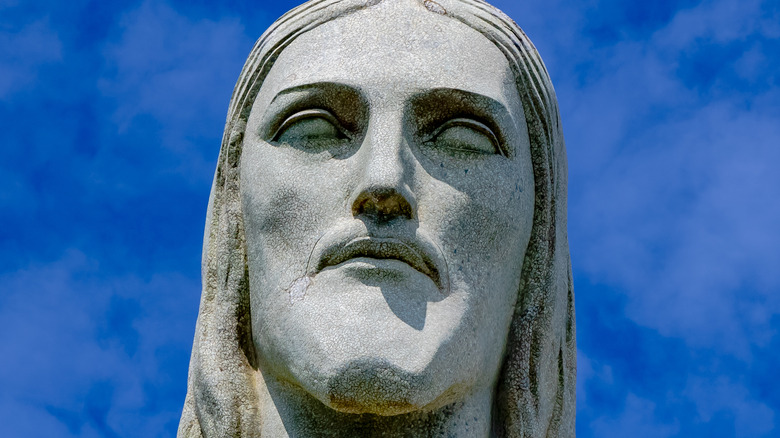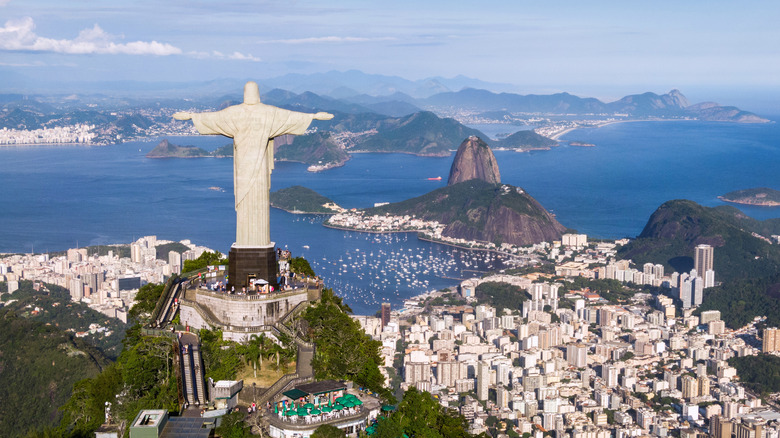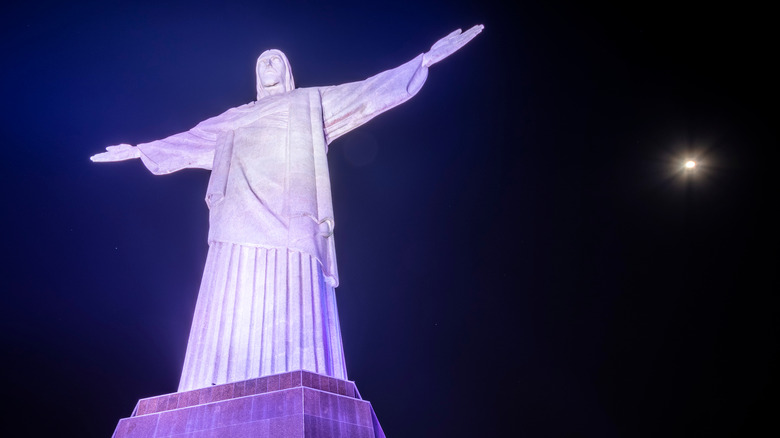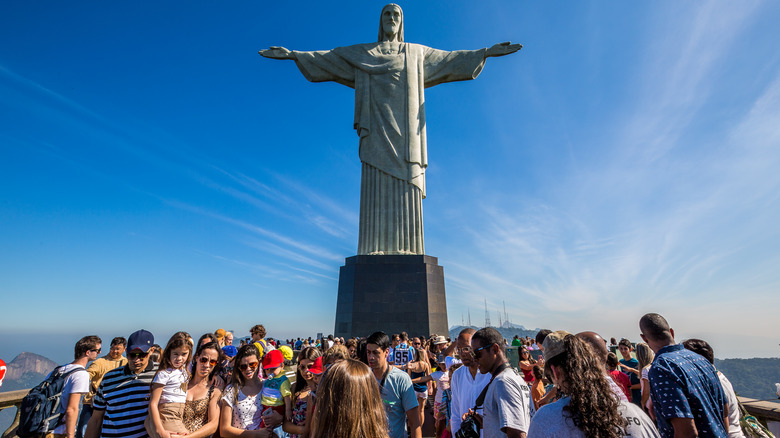The History Behind The Christ The Redeemer Monument
It is almost impossible to picture Rio de Janeiro, Brazil, without Christ the Redeemer (or Cristo Redentor), the massive statue of Jesus with the arms open wide over Guanabara Bay, placed on the top of Corcovado Mountain. The national symbol is celebrated in countless songs, and during the Carnival, there is a famous street party called "Suvaco de Cristo" ("Christ's Armpit"), Bloomberg reports. The Christ is also the most important tourist attraction in Rio de Janeiro, receiving nearly 2 million visitors per year, per U.S. News.
Completed in 1931 after five years of work, the Christ is the youngest of the "Seven Wonders of the Modern World." According to Britannica, the Christ is the largest Art Deco sculpture in the world: 98 feet tall; the outstretched arms measure 92 feet; the base alone is 26 feet high. It has a different meaning for each person who views it. While it represents the ultimate religious symbol for some, the open arms are just welcoming people for others. One of the statue's creators said it was a "monument to science, art and religion" (via The Washington Post).
There were many ideas before the final project
In 1850, a priest suggested the idea of building a Christian monument on the summit of Corcovado to honor Princess Isabel, Brazil's regent. However, the project was never approved, Britannica reports. During World War I, a group of Brazilians feared the advancing tide of godlessness, and they had the idea of building a massive image of Christ in Rio — then Brazil's capital — and the Catholic Church financed their project (via BBC).
The initial idea was to build a bronze statue on the Sugar Loaf, but they soon decided the Corcovado was a better location (via BBC). On April 4, 1922, there was a ceremony to put the foundation stone of the base. However, they didn't have a final design yet. There was a competition to find a designer, and the architect Heitor da Silva Costa was chosen. The design approved featured a Christ holding a cross in one hand and carrying a globe in the other one, and it was named "Christ with a ball." Another project showed Jesus as the cross himself, as a sign of redemption of humanity.
According to Britannica, the Brazilian artist Carlos Oswald has been credited for the arms wide open, and the sculptor Paul Landowski also teamed up with Costa. The construction began in 1926, and they used a railway to bring the material and workers. The inauguration happened five years later, in 1931.
The Christ's head and the hands came from France
Building the Christ was challenging. Costa had the mission to build a massive statue that people could see 2.5 miles away, and the structure should be strong; therefore, he decided to use reinforced concrete. According to BBC, Costa traveled to France to find help from Albert Caquot, a famous engineer who conceived the internal structure. While in Europe, he also contacted sculptors who could build a 4m-high scale model based on Oswald's projects.
The French sculptor Paul Landowski was commissioned for the project, and later, he carved the statue's head and hands in his office in France. Landowski never saw the Cristo in person (via Paul Landowski).
In 1927, there was a giant steel frame on the summit of Corcovado Mountain, and they didn't know how to finish it, since Costa didn't consider concrete as an option for the final result. While walking at the Champs Elysees in Paris, he saw a fountain covered with a silvery mosaic, and he decided it would be perfect for his project. The architect chose to cover the giant statue making a mosaic with small soapstone pieces (via BBC).
The Christ needs renovation from time to time
Like many other landmarks, the Christ also needs renovations from time to time to conserve the statue and improve the visitor's experience. In 1980, it received an intense cleaning for the visit of Pope John Paul II (via Britannica). Since 2002, visitors don't need to climb the 200 steps to reach Christ, as they have included escalators and a panoramic elevator. Its chapel was consecrated to Brazil's patron saint, Our Lady of Aparecida, to celebrate the statue's 75th anniversary. According to Euronews, the most recent restoration work happened this year, in preparation for its 90th anniversary in October.
In 2014, Lee Thompson made the headlines after posting a picture from the Christ few people in the world could take. He climbed the 12 flights of stairs inside the Christ, opened a trapdoor on its head and took a picture. "As I popped my head out of the hole in Jesus' crown, I was in total and utter awe as my eyes met with a vast panorama that quite literally took my breath away," he wrote (via Vice). According to My Rio Travel Guide, only engineers, architects, renovations workers, and specific photographers are authorized to see the statue from the inside.



